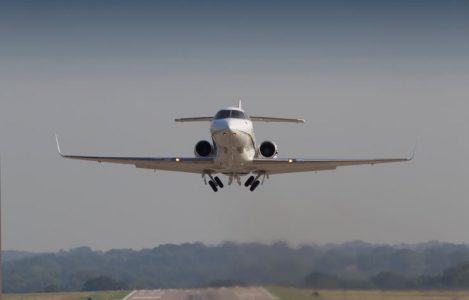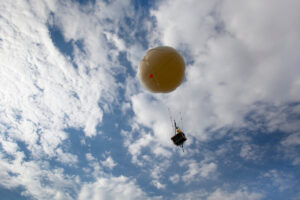Go Around or Missed Approach
In the cockpit, safely executing a go-around and missed approach is critical to successfully navigating potentially challenging scenarios during flight. As professional pilots, it’s essential to follow through on lessons from pilot training and experience to understand the procedure process for both go-arounds and missed approaches to respond quickly and effectively when necessary.
The San Diego Incident
In a recent incident at San Diego International Airport, a Southwest Boeing 737 and a Cessna Citation XLS came dangerously close to colliding in broad daylight. Thanks to the quick thinking of the Citation pilot, a potential disaster was averted when they initiated a go-around to avoid the 737 on the runway. However, the timing of the maneuver raises important considerations for pilot training.
The air traffic controller granted Southwest permission to line up and wait on runway 27 while informing the pilot about a Citation aircraft that had been cleared to land on a 5-mile final approach. After two minutes, the Citation crew asked the controller if they were still cleared to land, as they spotted the Southwest 737 still on the runway. In response, the controller immediately instructed the Citation to abort the landing, sparking concerns among investigators about the proximity of the two aircraft. The Citation successfully executed the go-around, the Southwest flight took off, and the incident concluded without further issues. However, reports indicate that the Citation came within approximately 100 feet of the 737.
Accomplishing a Go-Around or Missed Approach
As a quick refresher about the basics of accomplishing a missed approach or go-around, we put together a list of advice should the situation arise in flight:
- Initiate the Decision: The decision to execute a go-around or missed approach is typically made by the pilot flying (PF) based on factors such as unstable approach, runway incursion, insufficient visual reference, or air traffic control instructions. The decision should be made promptly and communicated to the pilot monitoring (PM) and air traffic control.
- Apply Full Power: The PF applies full takeoff power to initiate a go-around. This is done by smoothly advancing the thrust levers to the takeoff or go-around power setting. It is crucial to ensure a smooth and controlled application of power to maintain aircraft stability.
- Pitch Attitude and Flaps: Simultaneously applying full power, the PF adjusts the pitch attitude to maintain a safe climb angle. The aircraft’s flaps and/or slats may also need to be retracted according to the manufacturer’s recommended procedures.
- Retract Landing Gear: Once a positive rate of climb is established, the landing gear is retracted by following the aircraft’s specific procedures. This helps reduce drag and improve performance during the go-around maneuver.
- Verify Navigation and Approach Mode: During a missed approach, the PF verifies that the aircraft is tracking the appropriate navigation guidance and/or has engaged the correct autopilot or flight director mode to follow the missed approach procedure specified in the flight plan or air traffic control instructions.
- Communicate with Air Traffic Control: The PF or PM communicates with air traffic control to inform them about the go-around/missed approach and follow any further instructions ATC gives. Effective communication is essential to ensure coordination and safety.
- Follow Missed Approach Procedure: Based on the specific missed approach procedure outlined in the approach plate or air traffic control instructions, the PF closely follows the lateral and vertical guidance to navigate away from the airport or obstacle safely. This may involve tracking a specific course, climbing to a specified altitude, or following other instructions provided.
- Monitor Flight Instruments: Throughout the go-around/missed approach, the PF continuously monitors the aircraft’s flight instruments, including attitude, altitude, airspeed, and heading. Maintaining situational awareness and staying within the aircraft’s performance limitations is crucial.
- Review and Assess: After completing the go-around/missed approach, the PF and PM review and assess the situation that led to the decision. This review helps identify necessary actions, such as troubleshooting a system issue or coordinating with air traffic control for further instructions.
- Resume Normal Operations: Once the aircraft is safely established on the missed approach procedure, the crew resumes normal operations, such as communicating with air traffic control, reprogramming the flight management system, or adjusting the flight plan as needed.
Remember, these steps should be adapted to your aircraft’s operating procedures and airline standards. Always refer to the aircraft manufacturer’s manuals, company policies, and applicable regulations for accurate and up-to-date procedures.
It’s of paramount importance for pilots to remain aware of how to initiate go-around properly and missed approach procedures. Having a well-honed understanding of such safety techniques can go miles toward ensuring the highest standard of avionic safety when facing extreme conditions or an expected landing procedure is compromised.










